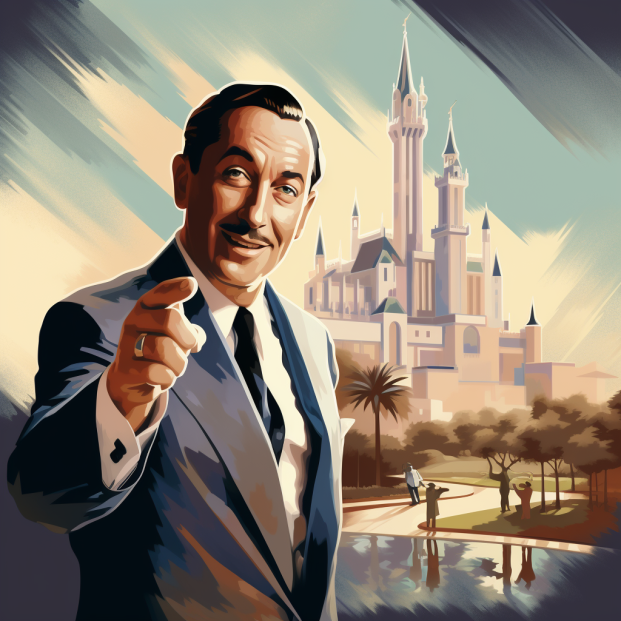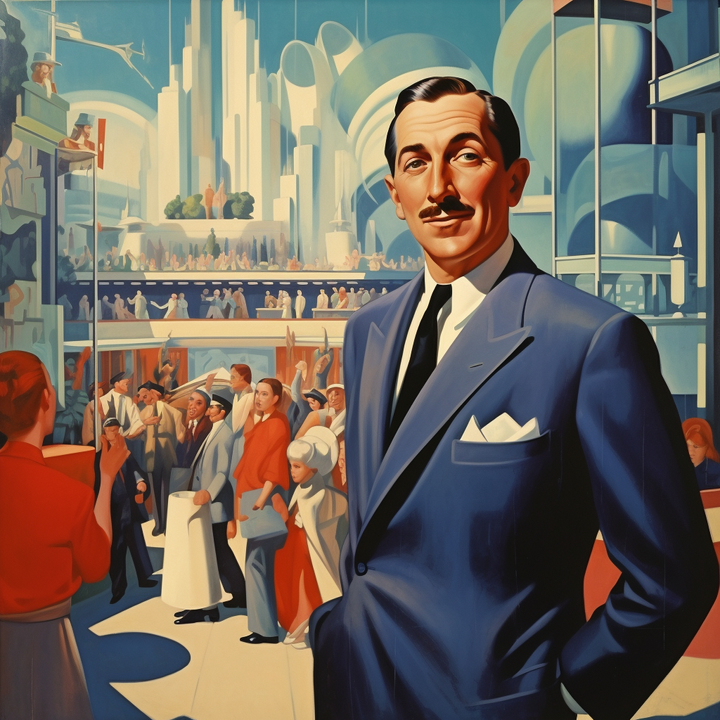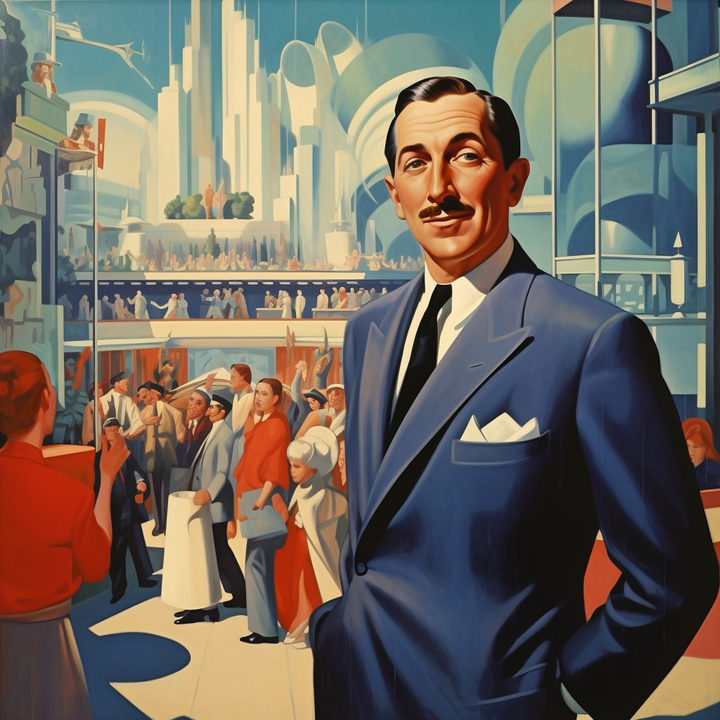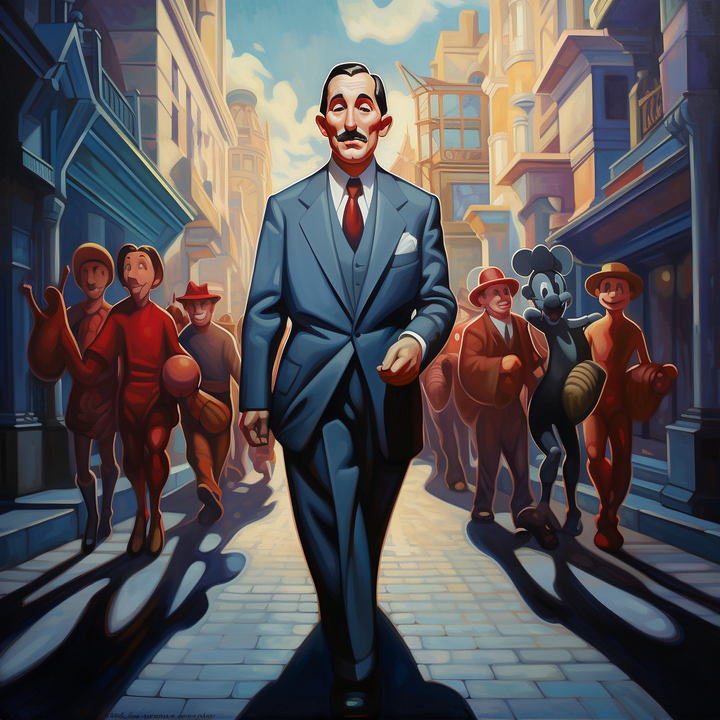Walt Disney and the Creation of Disney World

Few stories are as compelling as Walt Disney’s dream of creating Disney World in Florida. Building on the success of Disneyland in California, Disney aspired to establish something even grander.
His untimely death meant he wouldn’t see this dream realized, yet his unwavering vision set the stage for what would become a monumental testament to his legacy. Disney’s story is a profound narrative about the enduring power of a leader’s vision.
The Walt Disney World Resort, located in Florida, is now the most visited vacation resort in the world, featuring numerous attractions and playing a significant role as a major employer in the United States. The resort includes various theme parks such as the Magic Kingdom, Hollywood Studios, Animal Kingdom, and EPCOT, each offering immersive experiences based on specific themes.
Factual Details of the Creation of Walt Disney World History
Year of Announcement: 1965 Orlando, Florida, USA Project: Disney World
Walt Disney’s dream for Disney World was not just to replicate the success of Disneyland but to surpass it. He envisioned a sprawling entertainment complex, complete with theme parks, resorts, and even a planned community that would embody the future of urban living.
He purchased 27,000 acres in Central Florida, an area that would allow his expansive vision to take shape. Disney meticulously planned the project, but he passed away in 1966, before the groundbreaking, impacting the original plans for EPCOT. To be known as Walt Disney World Resort, the project would encompass Magic Kingdom, Wide World of Sports, Disney-MGM Studios (later renamed Disney's Hollywood Studios), Downtown Disney, and of course EPCOT.
Disney World opened in 1971, transcending Disneyland in size and scope. Disney's Animal Kingdom, the 4th theme park dedicated to animal conservation, was later added. The Magic Kingdom, as the central feature, became an iconic symbol of the resort, showcasing various themed lands and attractions. Disney's Hollywood Studios evolved from a studio-based theme park to one focused on immersive storytelling and Hollywood-inspired attractions.
It became a major tourist destination, contributing significantly to Florida’s economy. The Walt Disney World Speedway, used for professional racing and guest experiences, operated from 1996 to 2015.
Downtown Disney, originally known as Walt Disney World Village, underwent significant transformation and rebranding to become Disney Springs, incorporating themed districts like The Landing, the Marketplace, and the West Side.
Disney World’s creation exemplified the realization of a leader’s vision beyond their lifetime, influencing the future direction of the Walt Disney Company. Walt Disney World's various expansions and developments, including new attractions and resort hotels, continued to shape its legacy.
These developments are key milestones in Walt Disney World history, highlighting its continuous expansion and the addition of new theme parks and attractions.
Leadership Lessons from the Creation of Walt Disney
1. Vision Beyond One’s Lifetime:
- Disney’s ability to conceptualize Disney World demonstrated visionary leadership that transcends the constraints of time, inspiring leaders to think beyond their immediate presence and impact.
2. Meticulous Planning and Delegation:
- Disney’s detailed plans and the team he entrusted to carry on his work highlight the importance of meticulous planning and effective delegation in ensuring the continuity of a vision.
3. Legacy and Brand Evolution:
- Disney World’s creation significantly evolved the Disney brand, emphasizing how leaders can shape and guide the legacy and future direction of their organizations. The expansion of the Disney Vacation Club Resort in the 1990s and the focus on vacation club properties in the 2010s, such as Bay Lake Tower and the Riviera Resort, illustrate this evolution.
4. Risk-Taking and Innovation:
- The scale and ambition of Disney World represented a massive risk but showcased Disney’s commitment to innovation and pushing boundaries, essential qualities for transformative leadership.
5. Impact Beyond Business:
- Disney World’s cultural and economic impact on Florida and the entertainment industry reflects how visionary projects can have far-reaching effects beyond their immediate business scope. The Wide World of Sports Complex, hosting AAU tournaments, NBA playoffs, MLS tournaments, and Spring Training for teams like the Atlanta Braves and Tampa Bay Rays, further underscores this impact. Disney’s Animal Kingdom, dedicated to animal conservation and the natural environment, further exemplifies this impact with its accreditation by the World Association of Zoos and Aquariums and the Association of Zoos and Aquariums.
Walt Disney’s dream and the subsequent realization of Disney World stand as a remarkable example of how a leader’s vision can shape the future of an organization and create a lasting legacy. It serves as a powerful reminder that visionary leadership is about planting seeds for the future, nurturing ideas that may only come to fruition beyond one’s lifetime. Disney’s story teaches us that true visionary leadership is not just about creating a successful business but about building a legacy that endures and evolves.
Reflect on the story of Disney World’s creation and consider:
- How are you planting seeds for the future in your current leadership role?
- What steps can you take to ensure that your vision for your organization or projects outlives your direct involvement?
- How can you balance risk-taking with meticulous planning to realize ambitious projects?
- In what ways can you ensure that your legacy positively impacts your organization and community beyond your tenure?



